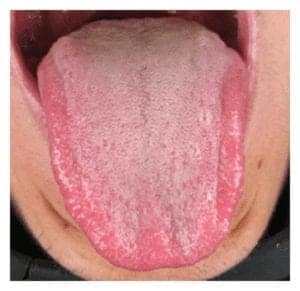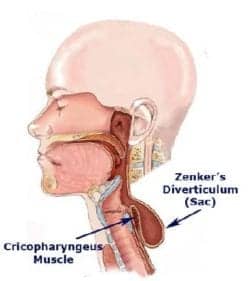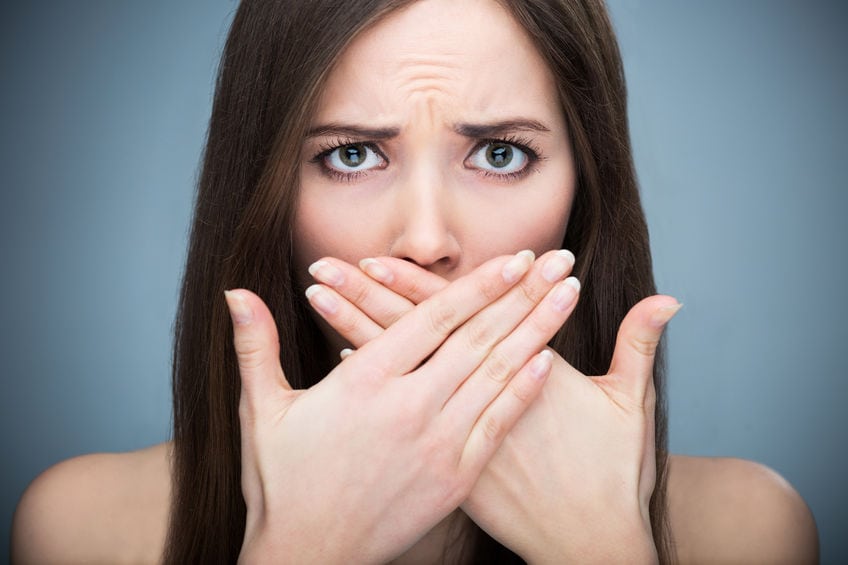Bad breath, also called halitosis, is a widespread condition that can affect people of any age. Indeed, about 30% of people may have bad breath.
It has been reported that Americans spend up to 3 billion dollars a year on gum, mints and breath fresheners, in most cases in order to improve their breath (1).
The type and intensity of bad breath may vary depending on the source and the underlying cause.
Although there rarely is a severe underlying disorder, bad breath may negatively affect quality of life and personal relationships. It can be socially embarrassing and may even cause anxiety.
The range of terms used in the scientific literature includes halitosis, bad or foul breath, oral malodor, fetor ex-ore, and fetor oris. These all describe unpleasant breath exhaled from the sufferer’s mouth.
Fortunately, in most cases, halitosis can be controlled, and simple treatment measures have been proven to be very useful.
Good looks aren’t what I look for in a man. That’s way down the list. If a man can make me laugh and stimulate me intellectually, then I wouldn’t mind if he was 4ft 8ins with a huge belly. The only thing that would put me off is bad breath – but even that can be fixed. A bad personality isn’t so easy to fix.
― Olga Kurylenko
1. What Is Bad Breath (Halitosis)?
Halitosis is defined as “oral malodor with intensity beyond a socially acceptable level perceived” (2).
Halitosis is not a disease in itself but a symptom with a variety of underlying causes.
It is important to acknowledge that there is a difference between the occasional and temporary bad breath that most people experience and chronic bad breath.
Temporary halitosis may be caused by tobacco smoking and consumption of aromatic food such as garlic and onion or beverages such as alcohol and coffee.
Chronic halitosis, however, is most often due to microbial degradation in the oral cavity but may sometimes be caused by an underlying disease process.
2. What’s the Difference Between Halitosis, Pseudohalitosis, and Halitophobia?
Halitosis can be classified into three main categories: genuine halitosis, pseudo-halitosis, and halitophobia.
In genuine halitosis, the patient has obvious oral malodor with an intensity beyond socially acceptable levels.
Pseudohalitosis also called subjective halitosis or delusional halitosis (imaginary halitosis), describes a perception by the patient that halitosis is present although there is no objective evidence of bad breath (2).
The term halitophobia describes the persistent fear of having bad breath that other people find offensive. It is estimated that 0.5%–1% of the adult population is affected by this problem in their social life (3).
3. What’s the Difference Between Physiologic and Pathologic Halitosis?
The term physiologic halitosis is used to describe bad breath that does not have a specific underlying cause (4). It is often transient and usually worse in the morning.
The term pathologic halitosis is used when the breath odor is a symptom of a disease or other pathologic condition, or aggravated by it (5).
Most often, physiologic halitosis is attributable to putrefaction processes taking place in the oral cavity, frequently within the white-colored coating found on the posterior portion of the tongue (6).
4. What Causes Foul Morning Breath (Morning Halitosis)?
Bad breath commonly occurs in the morning. This type of bad breath is defined as physiologic halitosis and usually resolves immediately after brushing, flossing, eating, or drinking water.
Foul morning breath is believed to be partly caused by a relatively low flow of saliva during sleep. This may promote bacterial action on entrapped food particles present on the dorsum of the tongue (2).
5. What Causes Bad Breath (Halitosis)?
Microbial degradation in the oral cavity is the primary cause of bad breath.
The primary causative microbes are gram-negative, anaerobic bacteria.
Volatile sulfur compounds (VSCs) are formed via the degradation of methionine and cysteine present in food particles. The most important VSCs involved in halitosis are hydrogen sulfide, methyl mercaptan, and dimethyl sulfide (3).
Other gases that may be responsible for halitosis are skatole, cadaverine, and putrescine (2).
The bacterial action causing oral halitosis most often takes place on material between the teeth and the dorsum of the posterior portion of the tongue (7).
Other causes of halitosis include disorders of the throat and nasal cavity, gastrointestinal disorders, and systemic disorders.
6. What Are the Most Common Causes of Bad Breath (Halitosis)?
In nearly 85% of all halitosis cases, the origin is found in the oral cavity (3).
One study of 2.000 patients showed that 76% of halitosis had oral causes: tongue coating (43%), gingivitis/periodontitis (11%) or a combination of the two (18%) (8).

Tounge coating is the most common cause of bad breath. The dorsum (upper surface) of the tongue is an ideal niche for oral bacteria.
Accumulation and putrefaction of food remnants, poor oral hygiene, dental plaque, and dental caries all contribute to bad breath.
It has also been shown that unclean acrylic dentures (worn at night or not regularly cleaned or with rough surfaces) contribute to bad breath (9).
Gingivitis and periodontitis are common causes of the halitosis (10).
Gingivitis is a common form of gum disease that causes irritation, redness, and inflammation of the gingiva, the part of the gum around the base of the teeth.
Periodontitis is a gum infection that damages the soft tissue and destroys the bone that supports the teeth. Periodontitis is common but largely preventable. It’s usually the result of poor oral hygiene (11).
Tonsillitis, an inflammation of the tonsils, may cause halitosis
Dry mouth (xerostomia) is a fairly common condition that may cause bad breath (12). Several commonly used drugs may cause dry mouth (see no. 10 below).
7. Can Bad Breath Originate from the Nose?
Yes, it can.
When halitosis has a nasal cause, nasal exhalation will cause more bad breath than oral expiration (2).
Halitosis originating from the nose may be caused by acute and chronic sinusitis and postnasal drip.
8. What Gastrointestinal Disorders Can Cause Halitosis?

Volatile substances originating from the stomach or esophagus may sometimes cause bad breath
Zenker’s diverticulum, a pouch of the upper portion of the esophagus, sometimes associated with difficulty swallowing, may cause halitosis. The bad breath is caused by the breakdown of stagnant food in the pouch by microorganisms.
Stomach ulcers and gastroesophageal reflux disease (GERD) may occasionally cause halitosis.
9. What Systemic Disorders Can Cause Halitosis?
Advanced kidney disease, diabetic ketoacidosis, and advanced liver disease may cause bad breath.
Respiratory tract infections such as bronchitis are rare causes of halitosis.
10. Can Drugs Cause Bad Breath (Halitosis)?
Many medications can cause dry mouth which may lead to halitosis. Examples are diuretics, antihistamines, decongestants, tricyclic antidepressants, and amphetamines (2).
The following drugs may be directly responsible for oral malodor: dimethyl sulfoxide (predominantly used as a topical analgesic), cysteamine (used to treat patients with nephropathic cystinosis) nitrates and nitrites (used to treat angina pectoris), disulfiram (used in the treatment of alcohol dependence), penicillamine (used to treat rheumatoid arthritis), chloral hydrate (a sedative agent), suplatast tosilate (an anti-allergic agent), and paraldehyde (used to treat epilepsy)(13).
11. What Should You Look For if You Have Bad Breath (Halitosis)?
Most causes of halitosis may be found in the oral cavity.
Check if there is a coating of the tongue. Look closely at the posterior portion of the upper surface (dorsum)of the tongue.
Check the teeth. Are they in good repair?
Check if the dental floss has a bad smell after it has been used.
Check the gums. Redness or swelling of the gums may indicate gingivitis.
12. How Can Bad Breath (Halitosis) Be Prevented or Cured?
Malodor that arises from the mouth is the consequence of microbial putrefaction of food debris, cells, saliva, and blood. (14).
Hence, good oral hygiene is the first step to prevent halitosis.
Brushing at least twice a day and flossing daily can help to prevent and reverse gingivitis and periodontitis.
If halitosis persists despite good oral hygiene, the tongue may be the likely source of the odor. In such cases, tongue cleaning may be indicated.
Gentle cleaning of the posterior portion of the tongue with a toothbrush or with a plastic tongue cleaner may often be helpful.
Bridges or dentures should clean it thoroughly at least once a day. Dental retainers or mouth guards should be cleaned each time before they are put in the mouth.
Proper hydration may help prevent dry mouth.
Decreasing alcohol and coffee intake may be helpful.
A range of mouthwashes has been suggested for the treatment of bad breath. These act by reducing either the bacterial load or the associated odoriferous compounds (12).
13. Can Mouthwashes Help to Prevent Bad Breath (Halitosis)?
Studies suggest that mouthwashes containing chlorhexidine gluconate, cetylpyridinum chloride, chlorine dioxide, and zinc chloride can be effective in reducing bad breath (13, 14).
Patients may sometimes be reluctant to use chlorhexidine long term as it has an unpleasant taste and if used too frequently, and can cause reversible staining of the teeth (12).
Triclosan, often used in mouthwashes and toothpaste may also reduce oral malodor. A formulation of triclosan/co-polymer/sodium fluoride seems to be particularly useful in reducing volatile sulfur compounds, oral bacteria, and oral malodor (15).
The best time to use mouthwash is probably before bedtime (2). The bacterial activity leading to bad breath is most significant during sleep, and if taken before sleep, the mouth rinse may remain in the mouth for a longer period, leading to a greater effect.
Mouthwashes should also be used an hour or more after brushing the teeth because detergents in toothpaste may inactivate the antibacterial agents used in mouthwashes (2).
Because much of the bad breath originates from the back of the tongue, it is important to gargle when using mouthwashes.
Discover more from Doc's Opinion
Subscribe to get the latest posts sent to your email.



As usual an outstanding article.
Perhaps you may want to add that forced mouth breathing such as that induced by nasal septum deviation, chronic rhinitis, turbinates hypertrophy will cause drying of the mucosa, especially at night.
Thanks Robert.
Appreciate your interest.